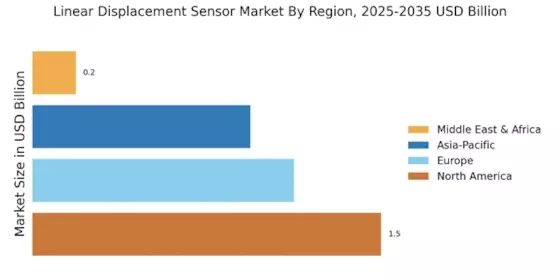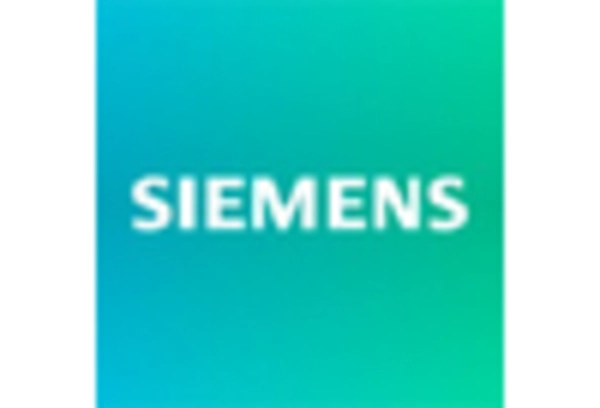Advancements in Sensor Technology
Technological advancements in sensor technology are reshaping the landscape of the Linear Displacement Sensor Market. Innovations such as improved materials, enhanced sensitivity, and miniaturization are leading to the development of more efficient and reliable sensors. These advancements enable linear displacement sensors to perform in a wider range of applications, from aerospace to automotive industries. The market is witnessing a shift towards more sophisticated sensors that offer better performance and durability. As industries increasingly adopt these advanced sensors, the Linear Displacement Sensor Market is likely to experience substantial growth, with projections indicating a potential increase in market size by 8% over the next five years.
Expansion of Automotive Applications
The automotive industry is undergoing a transformation, with a growing need for precision measurement tools, thereby impacting the Linear Displacement Sensor Market. As vehicles become more sophisticated, the demand for linear displacement sensors in applications such as suspension systems, engine management, and safety features is on the rise. The automotive sector is projected to grow at a rate of approximately 5% annually, driven by advancements in electric and autonomous vehicles. This expansion is likely to create new opportunities for linear displacement sensors, as they are essential for ensuring the performance and safety of modern vehicles. Consequently, the Linear Displacement Sensor Market is poised for growth as it aligns with the evolving needs of the automotive sector.
Rising Demand in Manufacturing Sector
The manufacturing sector is experiencing a notable increase in demand for precision measurement tools, including those found in the Linear Displacement Sensor Market. As industries strive for enhanced efficiency and accuracy, the adoption of linear displacement sensors is becoming more prevalent. According to recent data, the manufacturing sector is projected to grow at a compound annual growth rate of approximately 4.5% over the next few years. This growth is likely to drive the demand for linear displacement sensors, which are essential for applications such as quality control, automation, and process optimization. The integration of these sensors into manufacturing processes not only improves product quality but also reduces operational costs, thereby reinforcing their importance in the Linear Displacement Sensor Market.
Growing Focus on Automation and Robotics
The increasing emphasis on automation and robotics across various industries is significantly influencing the Linear Displacement Sensor Market. As companies seek to enhance productivity and reduce labor costs, the integration of automated systems is becoming more common. Linear displacement sensors play a crucial role in providing accurate position feedback in robotic applications, which is essential for precise movements and operations. The market for industrial automation is expected to expand, with estimates suggesting a growth rate of around 6% annually. This trend indicates a robust demand for linear displacement sensors, as they are integral to the functionality of automated systems, thereby propelling the Linear Displacement Sensor Market forward.
Increased Investment in Research and Development
Investment in research and development (R&D) is a critical driver for the Linear Displacement Sensor Market. Companies are allocating significant resources to innovate and improve sensor technologies, which is essential for maintaining competitive advantage. This focus on R&D is expected to lead to the introduction of new products that meet the evolving needs of various sectors, including automotive, aerospace, and manufacturing. The trend of increased R&D spending is likely to result in enhanced sensor capabilities, such as higher accuracy and better environmental resistance. As a result, the Linear Displacement Sensor Market may see a surge in demand for these advanced products, fostering growth and expansion.

















Leave a Comment